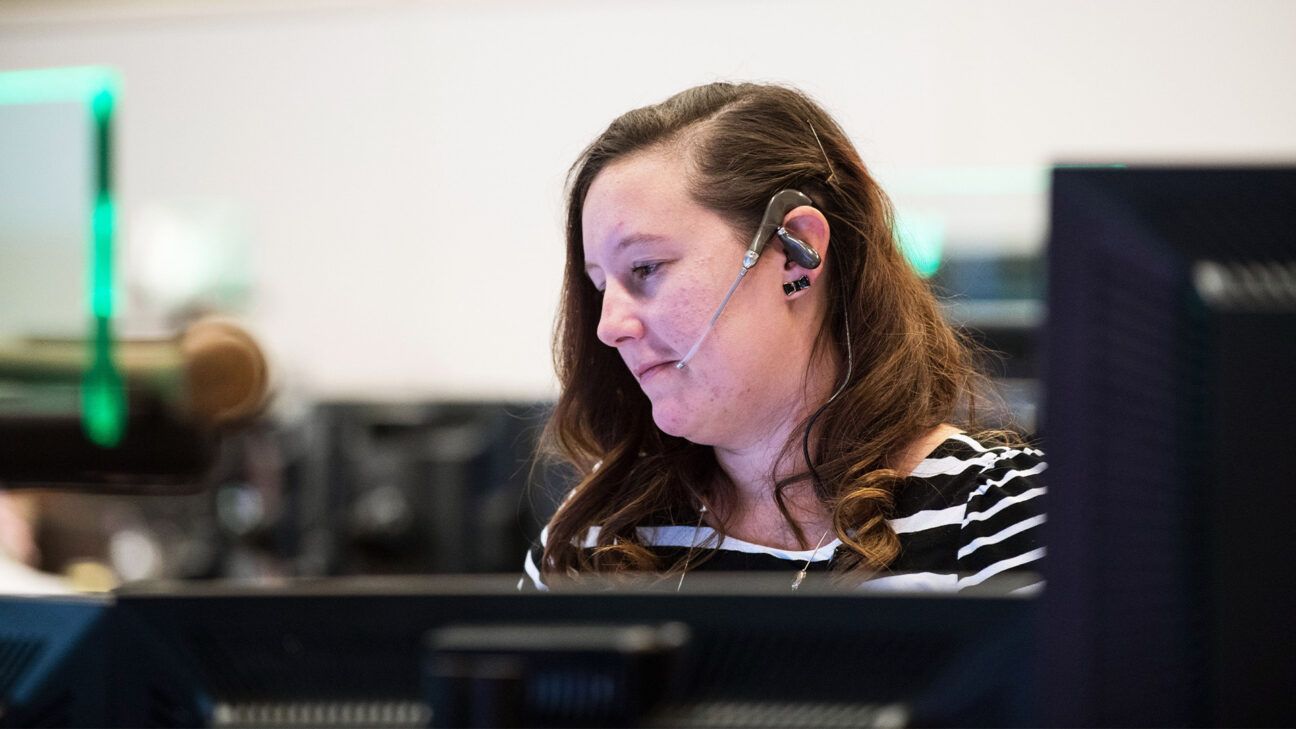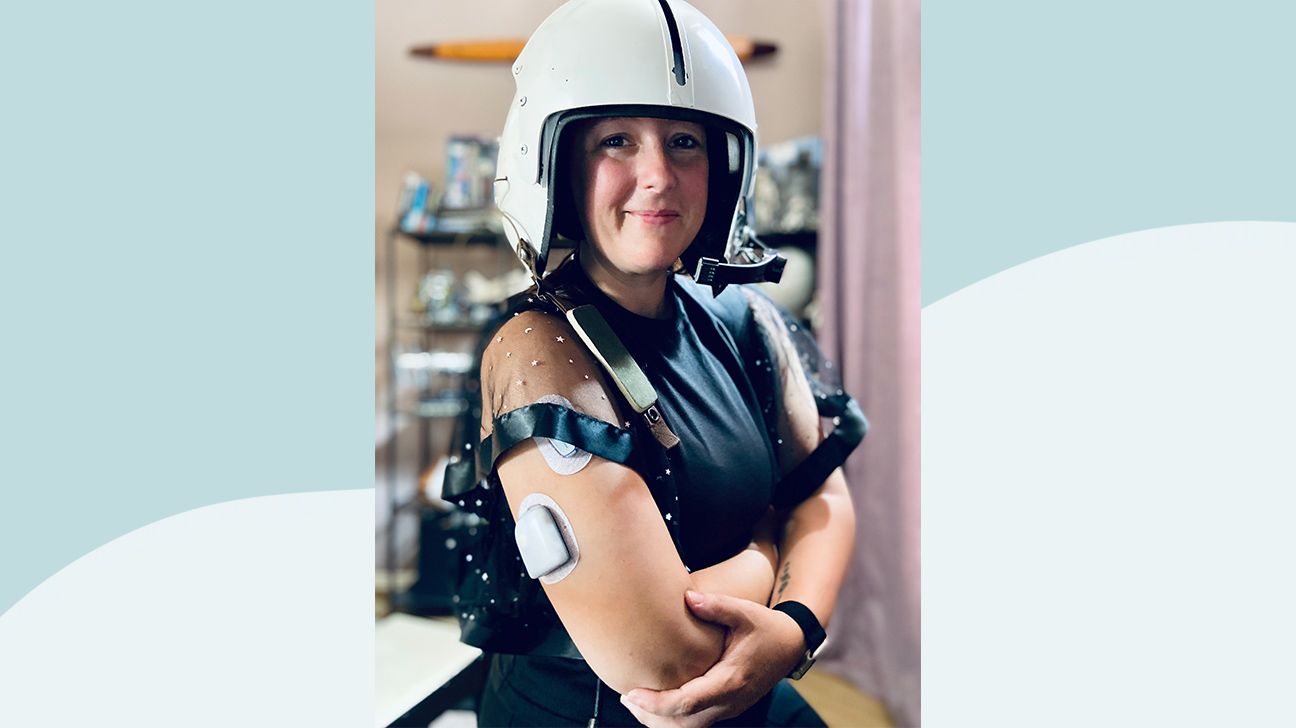
- April Blackwell found a way to work in aerospace despite having type 1 diabetes.
- People with type 1 diabetes are disqualified from flying to space.
- Blackwell advocates for others with dreams of being astronauts.
Since kindergarten, April Blackwell dreamed of becoming an astronaut.
“My dad was probably the catalyst in that. He was very interested and grew up in the Apollo moon landing days and was enamored with space his whole life, and he excited that in me as well,” Blackwell told Healthline.
However, when she was diagnosed with type 1 diabetes at 11-years-old, she knew the condition disqualified her from flying to space as a NASA astronaut. The reality caused her to contemplate holding onto her dream.
“Eventually I decided that I just couldn’t get it out of my head and even if I couldn’t be an astronaut, I still wanted to contribute in some way to the aerospace industry,” she said. “[It’s] such an inspiring industry…even beyond all the technical things, it shows us how to solve problems and that no problem is too big.”
This notion parallels her journey with type 1 diabetes during her adolescence and teen years. Through trial and error, she learned to manage her condition, and keep ambitions of space at the forefront of her mind. Doing so, gave her motivation to pull through her hardest days.
“I knew in order to get to the other side, in order to work on the space station or figure out a trajectory to the moon, I had to get through this day with diabetes,” said Blackwell.
Overcoming challenges of living with diabetes while working for NASA
After college, Blackwell worked alongside Army test pilots as a flight path engineer. She flew on board experimental helicopters and directed pilots and aircrafts with the purpose of gathering data.
Although she was not enlisted in the Army, for her to be on board the planes, she had to get an FAA class III medical. Because of her type 1 diabetes, this posed a challenge.
“At the time, it was a waiver process to get a class III medical, so I had to see a medical doctor, but I also had to send in a lot of data and information in order for them to actually grant me a waiver with that medical clearance,” said Blackwell.
Other activities of her job like dunker training, a parachute course, and altitude chamber, required her advocating for herself, too.
“I had to sort of champion for myself and prove to the Army doctors that it was safe to do these activities even with type 1,” she said.
Her job with NASA started as a flight controller, which involves aiding international space flight from the ground in a Mission Control Center. The certification for the job also requires medical qualification, which needs to be evaluated every two years for most people, but every year for those with type 1 diabetes.
She recently took a new role working on NASA’s next big campaign the Artemis mission, which will land the first woman and first person of color on the moon, using innovative technologies to explore more of the lunar surface than ever before.
“My job now is to integrate all of these flight dynamics, so that’s stuff like a [rendezvous], propulsion, guidance navigation and control, trajectory,” Blackwell said.
She leads a team of people who are working on different aspects of a new moon lander.
The mission feels full circle for her — from her dad’s admiration for Apollo 11 landing on the moon in 1969 to witnessing his daughter help make the second landing on the moon possible more than 50 years later.
“I cannot wait. I don’t know how I’m going to react when this mission happens,” she said.

Advocating for herself inspired her to advocate for others living with type 1 diabetes
Blackwell’s initial advocacy work came from advocating for herself during her work alongside the Army. While trying to get FAA medical clearance, she began sharing her story on her blog and connected with others living with type 1 diabetes in similar situations.
“I was able to talk to some folks about how to get through that [FAA medical] process. I realized that sharing your story is so powerful and especially the story that connected with my goal to be an astronaut,” she said.
She mentors youth and young adults interested in careers in STEM (Science, Technology, Engineering, and Math) and aerospace.
“I tell them to find your passion because finding your passion is what is going to push you through your hard days, whether they are hard days because you have diabetes or because life is hard sometimes,” she said.
She also helps parents of children with type 1 diabetes who aspire to be astronauts navigate conversations. As a mom of two children 5 and 7 years old, she empathizes.
“[As] a parent, you don’t want to stifle any dreams that your kids might have, but at the same time, you don’t want to give them false hope,” said Blackwell. “So, navigating those conversations can be very challenging and especially if that’s not your area of expertise, so I love talking to parents about that.”
With advancements in management of type 1 diabetes, including insulin pumps and continuous glucose monitors that communicate with each other, creating an “artificial pancreas,” Dr. Rifka C. Schulman-Rosenbaum, director of inpatient diabetes at Long Island Jewish Medical Center, said people with type 1 diabetes can pursue their passion, and goals.
“A diagnosis of type 1 diabetes in most cases would not limit career choice. Flying to space may be a rare exception,” she told Healthline.
As diabetes technology continues to improve, Dr. Karl Nadolsky, endocrinologist and diplomate at the American Board of Obesity Medicine, said they continue to provide opportunity for people to live fully.
“The new insulin pumps, known as ‘hybrid closed loops,’ which work with continuous glucose monitoring, really have data and anecdotal experience showing their benefits for patients and making their lives easier from the aspect of self-management,” he told Healthline. “[I’m] very hopeful as technology and even therapies for delaying overt hyperglycemia are rapidly improving.”
Landing on JDRF’s Twitch channel
Blackwell’s latest way to spread awareness involved livestreaming herself gaming. She appeared on the Juvenile Diabetes Research Foundation (JDRF) Twitch channel to play Animal Crossing: New Horizons. The livestream was part of a fundraiser for JDRF.
During the game, she visited Omnipod Bay, a diabetes themed island designed by insulin pump manufacturer Insulet, to help bring representation to the gaming world for kids with type 1 diabetes. There is even an avatar in a space suit that was created to resemble Blackwell.
“I sort of geeked out a little bit,” she said. “The island is really fun to hang out in because there are lot of cute little diabetes easter eggs; the names are so cute like A1C, which we always talk about with our endocrinologist.”
She said the island helps people with type 1 diabetes feel represented and welcome without judgement while also bringing awareness to others not living with the condition, including her own kids.
“[My] kids don’t have the disease, but they see me deal with it every day and seeing it show up in real life in a place like [the game], I think makes it even more normal,” she said. “[It] helps give them more empathy for not just people with type 1 diabetes, but people with any sort of situation that may have an outward visible aspect to it, [but in the game], we’re all just hanging out and having fun and looking for sea creatures or dressing up in cute outfits.”
She is hopeful that continued representation and advocacy will help those living with type 1 diabetes move from an avatar in a game to real world situations.
“I know there be a [person living with] type 1 going to space soon and I can’t wait to see that in my lifetime…I don’t know that that’s going to be through NASA. I think that’s going to be through other avenues, other space companies,” she said. “There also are so many other careers that aren’t even dreamed of yet and I can’t wait to see [a person living with] type 1 . . . there.”
Managing Type 1 Diabetes Isn’t Rocket Science for This NASA Aerospace Engineer
Source: Pinoy Lang Sakalam



0 (mga) komento:
Mag-post ng isang Komento